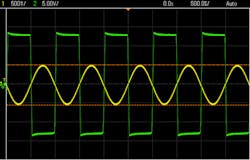Welcome back to our common oscillator type series! In this post, we will be covering temperature-compensated crystal oscillators (TCXOs). More specifically, you will learn some of the best qualities TCXOs typically offer for your applications.
By the way, if you missed our first oscillator series post on OCXOs, you can check it out here.
Let’s take a look at some top performance qualities of a TCXO.
TCXO Performance Qualities
A standard TCXO has quite a few performance qualities and can even completely solve two major problems with quartz crystal. Some of the most common performance characteristics are summarized below:
- TCXO PPM performance: The TCXO temperature performance is better than that of a normal crystal oscillator. Figures of between 10 and 40 times improvement can often be seen. Figures of better than ±1.5 ppm over a 0 to 70°C temperature range are difficult to achieve, as they then fall into a high-precision category where costs increase significantly.
- Power dissipation: The power dissipation of a TCXO will be greater than an ordinary oscillator in view of the additional circuitry required. Additionally, the cost is greater. It should also be remembered that it will take a short while after start up for the oscillator to stabilize (and hopefully stay stabilized). This may be of the order of 100 ms, or possibly longer, dependent upon the design.
- TCXO package: TCXOs can be supplied in a variety of packages dependent upon the way they have been designed and the requirements of the end user. The most common form of construction is to construct the circuit on a small printed circuit board that can be housed in a plated metal package. This then becomes suitable for mounting onto the main circuit board of the overall equipment. As the crystal itself is sealed, this means that sealing of the overall TCXO package is not critical, or even required for most applications.
Note: Package sizes such as 5 × 3.2 × 1.5 mm or 5 × 3.5 × 1 mm are widely used for TCXOs and smaller packages are available if required.
- Output format and level: With many TCXOs being used for driving digital circuits, most of the small oscillator packages produce what is termed a clipped sine wave. This is suitable for driving a logic circuit, although in many cases it is wise to put it through a logic buffer to ensure it is sufficiently square. Often the output is an open collector circuit. If a sine wave output is required, this must be chosen at the outset; it will limit the choice available.
- Power requirements: The actual power requirements will depend upon the device. Many operate from supplies of 3 V and may draw as little as 2 mA, although this will depend upon the general type, the manufacturer, and the particular device chosen.
Now that you know about the many capabilities of a TCXO, which type are you going to choose? Of course, you’re going to want the best TCXO for your application, so here’s a quick look at some options for you to consider.
4 Common Types of TCXOs
Although temperature-compensated crystal oscillators are normally referred to in this manner, occasionally more detailed descriptions are used. This has resulted in the variety of techniques that can be used to provide the temperature compensation.
- ADTCXO: This is an analog digital TCXO, widely used in cell phones. ADTCXOs use analog technology to provide temperature correction to the oscillator. It has the advantage that changes take place slowly and no phase jumps are experienced as occurs with some all-digital types.
- DTCXO: As may be guessed, this is a digital TCXO. A DTCXO begins with a temperature sensor. Logic and mathematical functions use digital circuitry along with a look up table. The resulting digital correction figure is converted to an analog signal using a digital-to-analog converter (DAC).
- DCXO: This is a form of oscillator where any correction is calculated by the host processor within the equipment. In this way, the TCXO is not a separate entity, but the processing is incorporated within that of the overall equipment. This can help save costs in some instances.
- MCXO: This form of TCXO uses a microprocessor to provide a considerably increased level of processing to provide more accurate compensation under a variety of circumstances. While performance is a little better, costs are above those of the other forms.
TCXOs are widely used where accurate frequency sources are needed. They are less expensive and smaller than oven-controlled crystal oscillators. As such, they offer an ideal solution for many portable units requiring a reasonably accurate source.
With all this temperature talk, have you ever wondered if a crystal oscillator can operate outside its specified temperature range? Check out our blog post to find out!
Unfortunately, that wraps things up for this post. But wait! We’re not done with TCXOs just yet. The next post in this series will cover the effects of temperature on TCXOs, as well as a look into their internal workings. See you then!
About the Author
Tommy Reed
Vice President of Technology
Tommy Reed is a Director of Technology Strategy at L3Harris. In his current role, he is shaping the company’s strategy through focused R&D and a solid understanding of the changing threat environment. Prior to joining L3Harris, Tommy was Chief Technology Officer at Bliley Technologies, where he led the engineering function and set the technology strategy for the company. Tommy holds a MSEE from the University of Florida.

